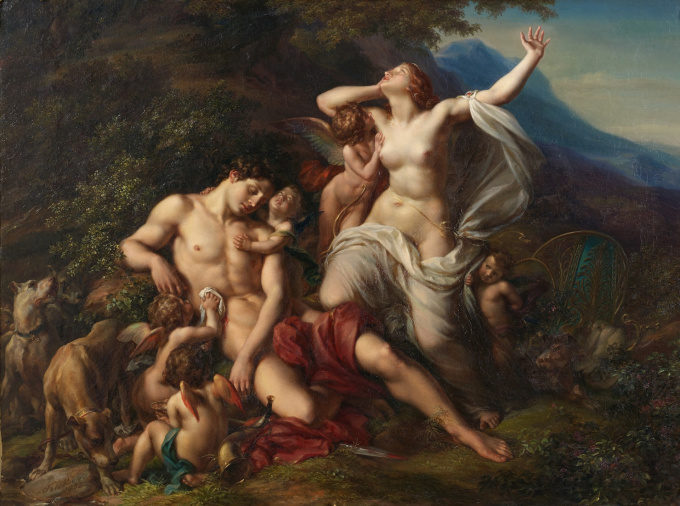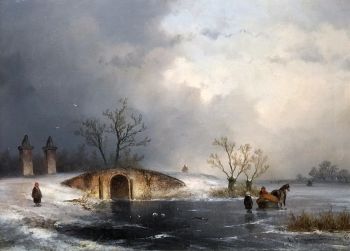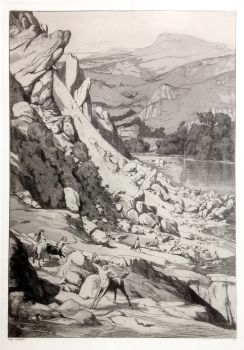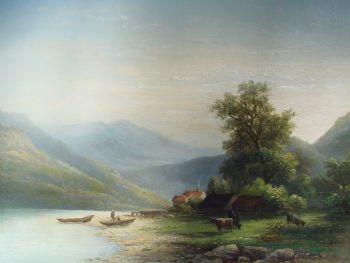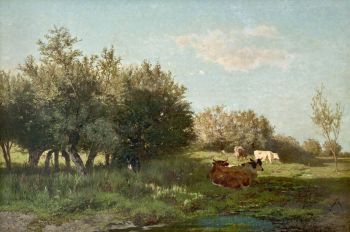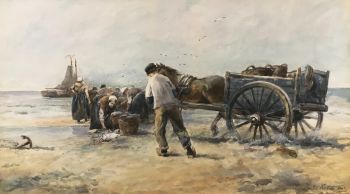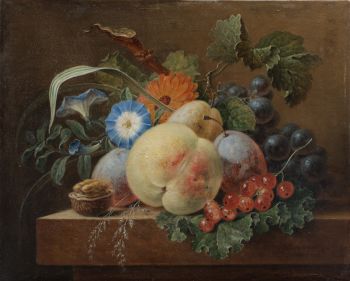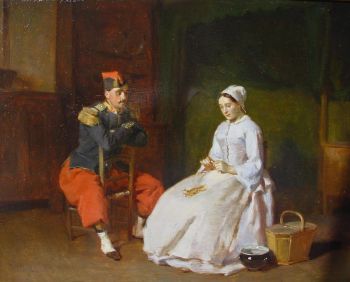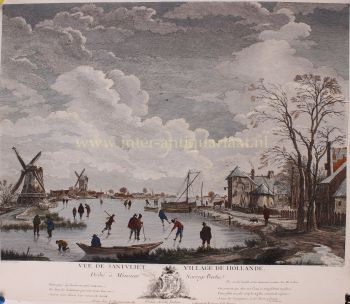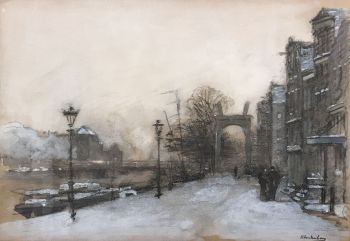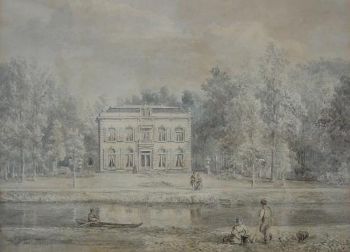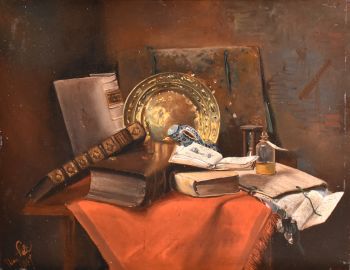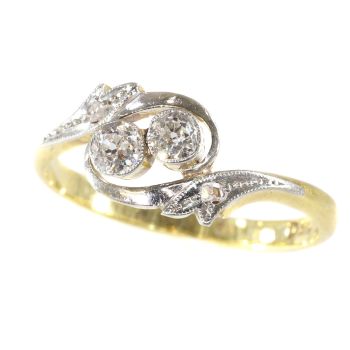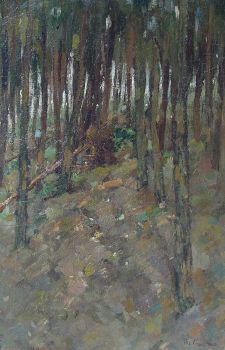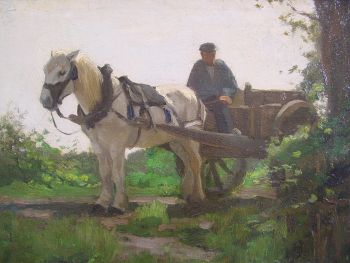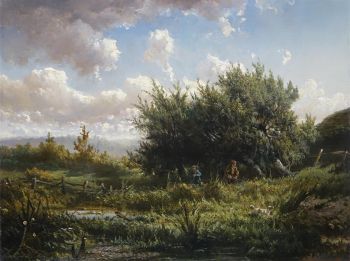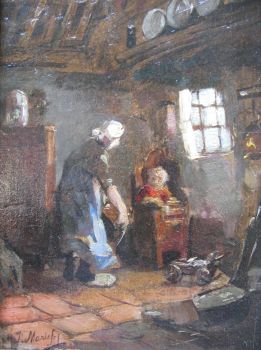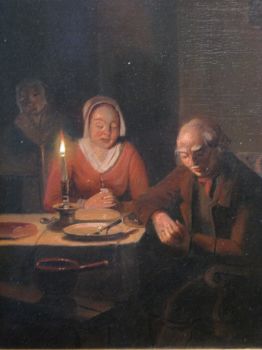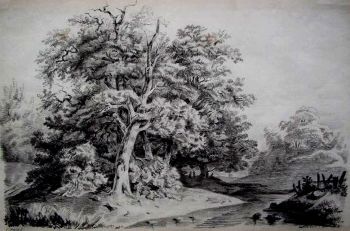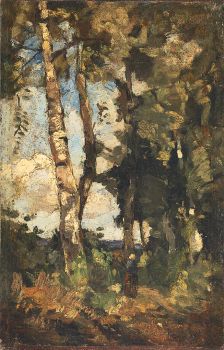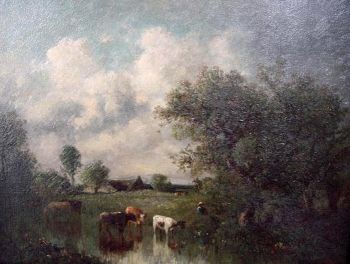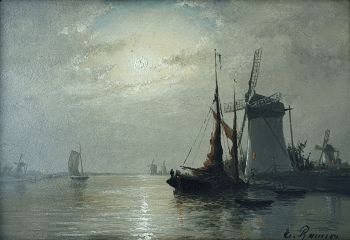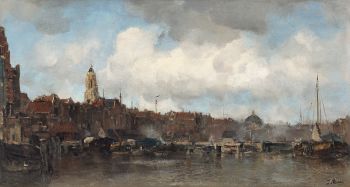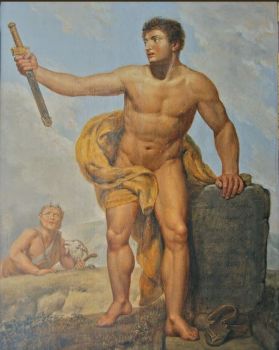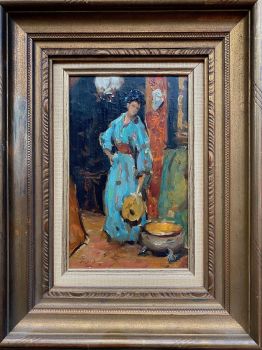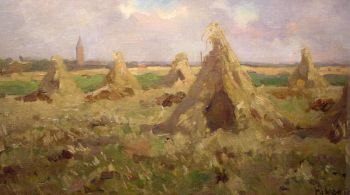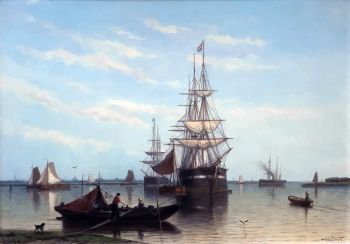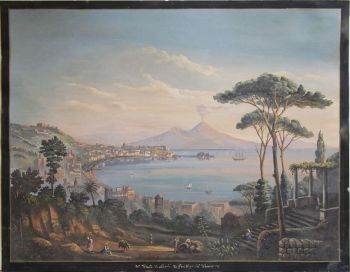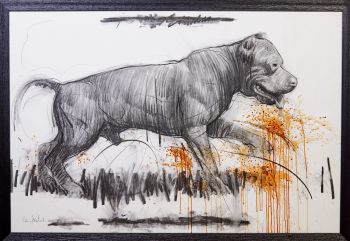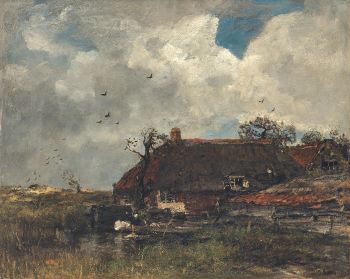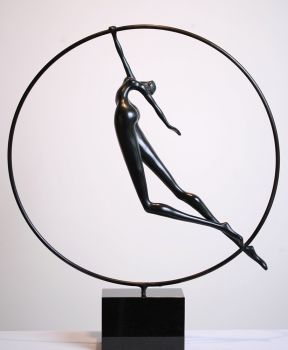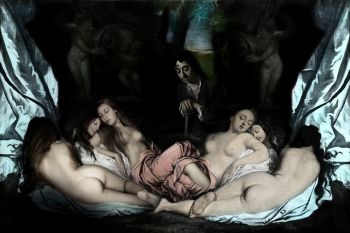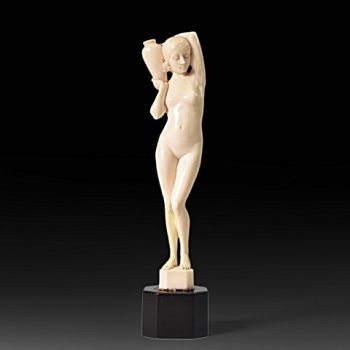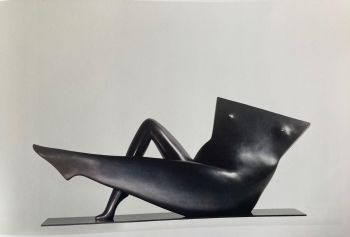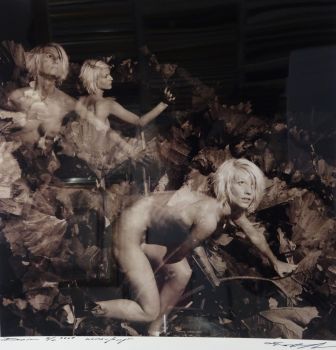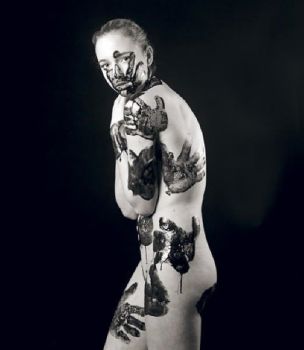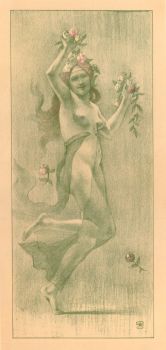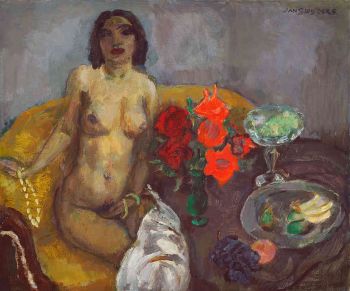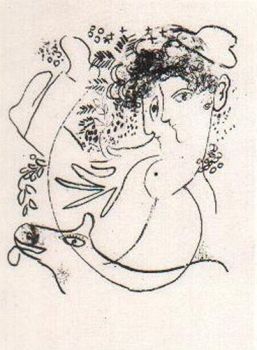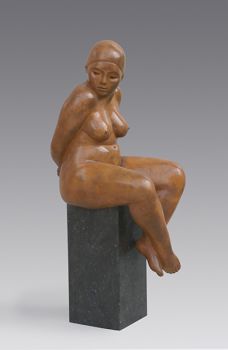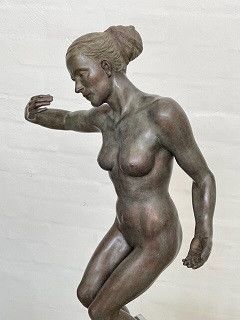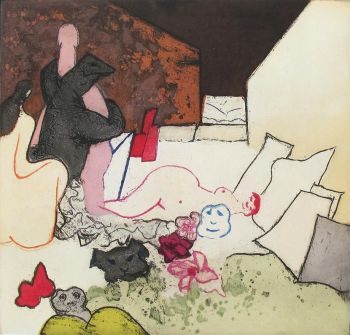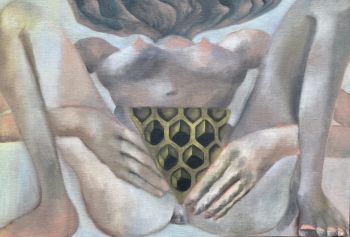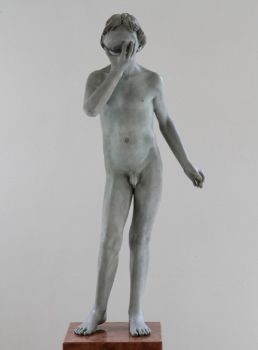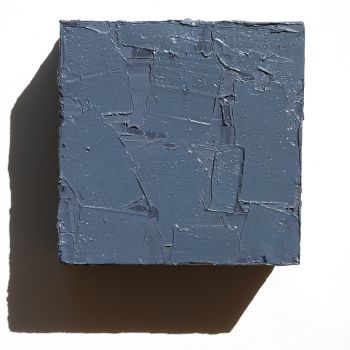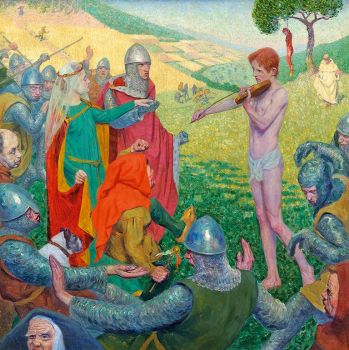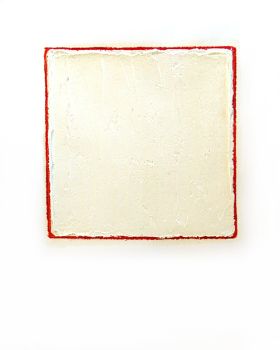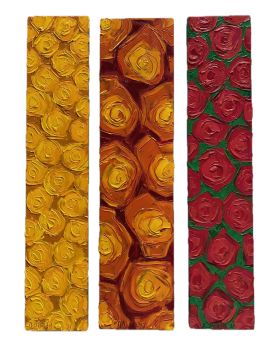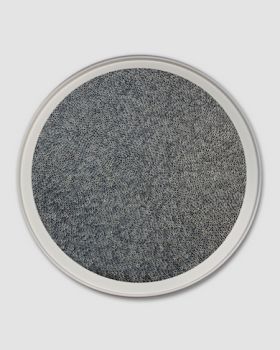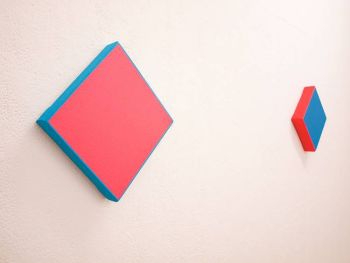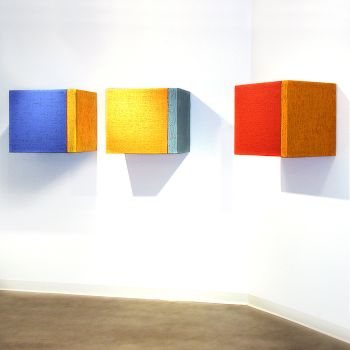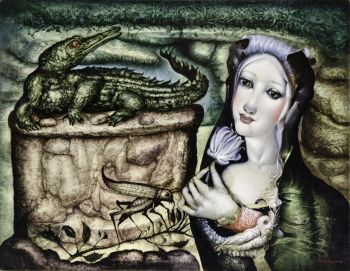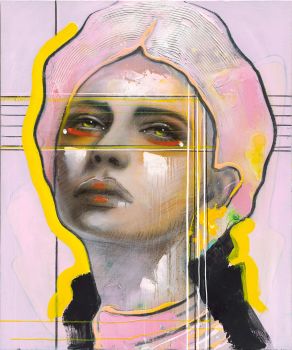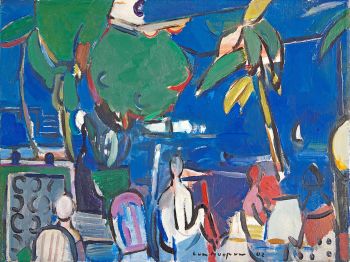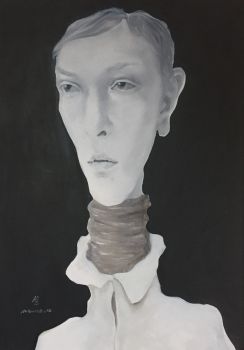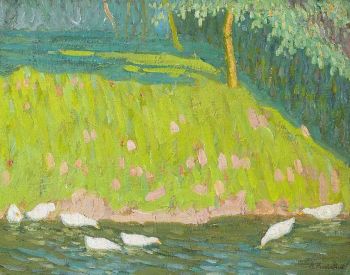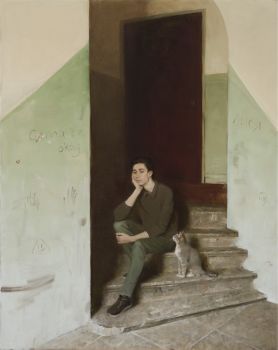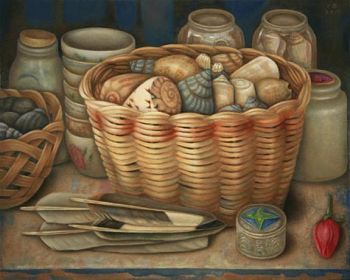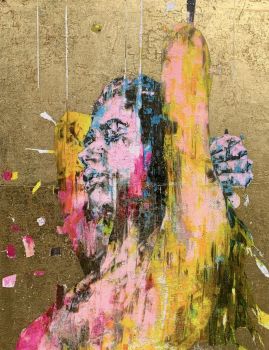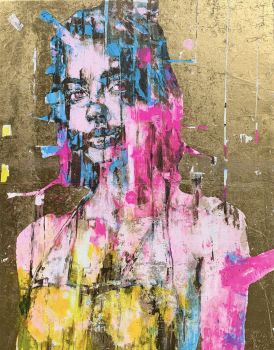A morte de Adonis 1852
August von Kloeber
Pintura a óleoPintar
100 ⨯ 130 cm
Atualmente indisponível via Gallerease
- Sobre arteThe Death of Adonis is a Greek Myth described by Ovid in his methamorphosis. Adonis was a fearless hunter, often recklessly as he was hunting dangerous game. This caused much unrest at Aphrodite, his lover, who was afraid that something might happen to him.
In vain she begged him to stay with her, where nothing could happen to him. But Adonis went hunting.
One day Adonis chased a wild boar. When he attacked the animal it turned furious and pierced Adonis with his fearsome tusk.
Aphrodite immediately came to the place where her darling came tragically to an end. When she arrived at the scene of the crime, Adonis was dead and stiffened and her passionate caresses were no longer answered by him. Aphrodite burst into tears. Once the tears hit the ground, they turned into anemones and the drops of blood that had flowed from the thigh of Adonis and had fallen to the ground, grew into beautiful red roses.
Aphrodite remained so intensely sad that she could not bear it at some point. She went to Olympus, where they fell at the feet of Zeus and begged him to release Adonis from the embrace of death, or to allow her to share his fate in the underworld.
It was impossible to allow the goddess of beauty to leave the earth and go to the underworld, but Zeus could also not be heard begging her. He therefore decided that Adonis would be called back from the underworld. But Hades had control of Adonis refused to let him go. After a lengthy discussion between Zeus and Hades, an arrangement was agreed. Adonis was allowed to spend one half of the year on Earth and had to return the other half to the Elysium.
At the beginning of the spring Adonis left the underworld and as soon as he could he went to his beloved Aphrodite. Wherever he set his footsteps flowers came up and the birds began to whistle. So Adonis became the symbol of the vegetation, which every spring comes up from the ground and covers the earth with beautiful leaves and flowers and that makes the birds chirping. In autumn Adonis turned reluctantly back to the underworld, and every year in the fall nature wept to his departure.
This picture by the famous German painter August von Kloeber was shown on the world exhibition in Paris where it attracted much attention. Von Kloeber studied in Berlin and Vienna. In 1820 he returned to Berlin at the instigation of the architect Schinkel for the paintings in the new theater.
For the Porcelain factory in Berlin he made several designs. In the course of his career he painted many Wall decorations for buildings including palaces of Friedrich IV of Prussia. This painting by August von Kloeber was once in the possession of the King and was probably intended for the New palace in Potsdam. - Sobre artistaVon Kloeber estudou em Berlim e Viena. Em 1820, ele retornou a Berlim por iniciativa do arquiteto Schinkel para as pinturas no novo teatro. Para a fábrica de porcelana em Berlim, ele fez vários projetos. No decorrer de sua carreira, ele pintou muitas decorações de parede para edifícios, incluindo palácios de Friedrich IV da Prússia.
Artwork details
Categoria
Assuntos]
Estilo
Material e Técnica
Cor
Related artworks
Corstiaan Hendrikus de Swart
Mountain landscape with Lake1838 - 1900
Preço em pedidoKunsthandel Pygmalion
1 - 4 / 24Gijsbertus Jan Sijthoff
Interior scene with a woman doing needlework1890 - 1920
Preço em pedidoVan der Aalst Fine Art
Carel Nicolaas Storm van 's Gravesande
My studio in Bruxelles1841 - 1924
Preço em pedidoKunsthandel Pygmalion
Bernardus Johannes Blommers
Het bereiden van de maaltijd1870 - 1914
Preço em pedidoStudio 2000 Art Gallery
1 - 4 / 24- 1 - 4 / 24
- 1 - 4 / 24

